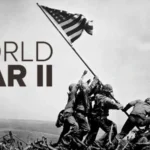
On September 11, 2001, the world witnessed one of the most tragic and impactful events in modern history. The attacks on the United States not only changed the lives of thousands but also reshaped global politics, security measures, and societal perceptions of terrorism. As we reflect on this pivotal moment, it’s essential to delve into the lesser-known aspects of that day and its aftermath. We will explore 25 interesting facts about 9/11 that reveal the complexity of the events, the resilience of those affected, and the far-reaching consequences that continue to influence our world today. Join us as we uncover the stories and statistics that provide a deeper understanding of this significant chapter in history.
9/11 was not the first attack on the World Trade Center. The World Trade Center was previously targeted in a terrorist attack on February 26, 1993. A truck bomb was detonated in the underground parking garage, aiming to bring down the North Tower. While the attack killed six people and injured over a thousand, it ultimately failed to achieve its goal of collapsing the towers. This earlier incident highlighted vulnerabilities in U.S. security and foreshadowed the more devastating attacks that would occur on September 11, 2001.
Flight 93’s passengers fought back. On the morning of September 11, 2001, United Airlines Flight 93 was hijacked by terrorists who intended to crash it into a target in Washington, D.C. However, the passengers, aware of the ongoing attacks, banded together and attempted to regain control of the plane. Their courageous actions led to the aircraft crashing into a field in Pennsylvania, preventing further loss of life and likely averting a larger disaster. All 44 people on board perished, but their bravery is commemorated as a symbol of resistance against terrorism.
A guide dog led its owner to safety. After the attacks, a remarkable story emerged of a guide dog named Dorado, who helped his owner, a blind man named Michael Hingson, escape from the South Tower. As the building was evacuating, Dorado instinctively guided Hingson down 78 flights of stairs, navigating the chaos and debris of the collapsing structure. Their survival story exemplifies the bond between humans and animals and the extraordinary courage displayed in the face of disaster.
The cleanup took nearly a year. The recovery and cleanup operation at Ground Zero was an immense undertaking that lasted from September 2001 until May 2002. The site was filled with debris, including steel, concrete, and personal belongings. Thousands of workers, including firefighters, police officers, and volunteers, labored tirelessly to clear the wreckage, recover remains, and search for survivors. The extensive cleanup effort was not only a physical task but also a necessary step in healing a nation in mourning.
Many 9/11 survivors suffer from health issues. In the aftermath of the attacks, many first responders and survivors were exposed to hazardous materials, including dust and toxic debris. As a result, a significant number have developed long-term health issues, including respiratory problems, cancers, and mental health disorders. The September 11th Victim Compensation Fund was established to provide medical care and compensation for those affected, acknowledging the ongoing impact of the attacks on their health and well-being.
The towers’ collapse took less than two hours. The North Tower was struck at 8:46 AM, and the South Tower was hit at 9:03 AM. The South Tower collapsed at 9:59 AM, followed by the North Tower at 10:28 AM, resulting in both towers falling in less than two hours. The rapid collapse was attributed to the structural damage caused by the impacts and the subsequent fires fueled by jet fuel and office materials. This unprecedented event shocked the world and raised questions about building safety and emergency preparedness.
Flight 77 hit the Pentagon. American Airlines Flight 77 was hijacked and crashed into the Pentagon, the headquarters of the U.S. Department of Defense, at 9:37 AM on September 11, 2001. The impact caused a significant portion of the building to collapse and resulted in the deaths of 125 individuals in the Pentagon, in addition to all 59 passengers aboard the flight. This attack underscored the vulnerability of even the most secure government facilities and marked a pivotal moment in the coordinated terrorist assaults that day.
Osama bin Laden was found nearly ten years later. The mastermind behind the 9/11 attacks, Osama bin Laden, remained at large for nearly a decade following the attacks. He was eventually located and killed by U.S. Navy SEALs in a raid on his compound in Abbottabad, Pakistan, on May 2, 2011. His death marked a significant moment in the U.S. response to terrorism and provided a sense of closure for many affected by the attacks, although the global threat of terrorism continued to evolve.
The attacks had global economic impacts. The 9/11 attacks had far-reaching consequences on the global economy. In the immediate aftermath, stock markets plunged, airlines suffered massive losses, and businesses faced unprecedented disruptions. The attacks led to increased security measures, which resulted in higher operational costs for airlines and travel industries worldwide. The long-term economic effects included shifts in international trade, investment, and security policies, as nations reassessed their vulnerabilities.
The 9/11 Memorial honors the victims. The 9/11 Memorial, located at the World Trade Center site in New York City, is a poignant tribute to the nearly 3,000 individuals who lost their lives during the attacks. Opened on September 11, 2011, the memorial features two large reflecting pools set within the footprints of the original Twin Towers, surrounded by a grove of trees. The names of all the victims are inscribed on bronze panels surrounding the pools, creating a serene space for reflection and remembrance. The memorial serves as a powerful reminder of the lives lost and the enduring impact of that tragic day.
A temporary memorial for Flight 93 was created quickly. In the wake of the 9/11 attacks, a temporary memorial was established at the site of the Flight 93 crash in Shanksville, Pennsylvania. This memorial was created to honor the bravery of the passengers who fought against the hijackers. The site features a simple yet moving display, including a wooden fence adorned with mementos, notes, and tributes left by visitors. In 2015, the official Flight 93 National Memorial was dedicated, featuring a visitor center and a permanent memorial that reflects the heroism of those aboard the flight.
Alcohol and tobacco use increased in Manhattan after 9/11. Following the traumatic events of September 11, 2001, there was a notable increase in the consumption of alcohol and tobacco in Manhattan. Many residents turned to these substances as coping mechanisms to deal with the stress, anxiety, and grief resulting from the attacks. This trend raised concerns about public health and the psychological impact of the events, prompting discussions about the need for mental health support and resources for those affected by the tragedy.
The wreckage burned for 99 days. After the collapse of the Twin Towers, the debris at Ground Zero continued to smolder and burn for an extended period, with fires persisting for 99 days. The intense heat and the materials involved made it difficult to fully extinguish the fires, which were fueled by a mixture of jet fuel, office materials, and other combustibles. The prolonged burning of the wreckage complicated recovery efforts and posed health risks to workers and first responders involved in the cleanup.
9/11 had a significant impact on global aviation security. The attacks on September 11, 2001, fundamentally transformed aviation security worldwide. In response to the hijackings, the U.S. government implemented a series of sweeping reforms, including the creation of the Transportation Security Administration (TSA) and the introduction of stricter screening processes for passengers and luggage. These changes aimed to prevent similar attacks in the future and have since influenced security protocols in airports around the globe, making air travel significantly more secure.
Several 9/11 memorials exist around the world. In addition to the main memorial in New York City, various memorials have been established worldwide to honor the victims of the 9/11 attacks. These include memorials in locations such as the Pentagon and Shanksville, Pennsylvania, as well as international tributes in countries like the United Kingdom and Australia. Each memorial serves as a reminder of the global impact of the attacks and the collective mourning shared by people around the world.
The 9/11 attacks led to extensive changes in U.S. foreign policy. The events of September 11, 2001, prompted a significant shift in U.S. foreign policy, leading to the launch of the War on Terror. The U.S. initiated military operations in Afghanistan to dismantle al-Qaeda and remove the Taliban from power. This marked a new era of U.S. engagement in global conflicts and counterterrorism efforts, resulting in long-lasting geopolitical ramifications and ongoing debates about national security, military intervention, and international relations.
Many iconic buildings were evacuated as a precaution. In the immediate aftermath of the 9/11 attacks, numerous iconic buildings and landmarks in New York City and across the United States were evacuated as a precautionary measure. This included skyscrapers, government buildings, and transportation hubs. The evacuation efforts were aimed at ensuring public safety and preventing further attacks, as fears of additional hijackings and terrorist activities loomed large in the days following the attacks.
The Tribute in Light is a poignant memorial. The Tribute in Light is an annual art installation that honors the memory of those who lost their lives on September 11, 2001. First illuminated on the night of March 11, 2002, the installation consists of 88 searchlights that project two beams of light into the sky, symbolizing the Twin Towers. The Tribute in Light has become a powerful symbol of remembrance and resilience, drawing visitors and spectators from around the world each year, especially on the anniversary of the attacks.
The Survivor Tree symbolizes hope and resilience. The Survivor Tree is a callery pear tree that became a symbol of hope and resilience after surviving the 9/11 attacks. Found amidst the rubble at Ground Zero, the tree was severely damaged but was nurtured back to health by the New York City Department of Parks and Recreation. It was eventually planted at the 9/11 Memorial, where it stands as a testament to the strength of the human spirit in the face of adversity. The Survivor Tree serves as a reminder of renewal and recovery, embodying the hope for a brighter future even after experiencing profound loss.
Ground Zero took eight months to clean up. The cleanup and recovery efforts at Ground Zero were monumental, involving thousands of workers and volunteers. The site was filled with debris, including steel, concrete, and personal items, and the process of clearing the area began immediately after the attacks. The cleanup lasted approximately eight months, concluding in May 2002. This extensive effort was not only about removing physical debris but also about recovering remains and personal belongings, which were treated with the utmost respect and care. The site has since transformed into a place of remembrance and reflection.
Seth MacFarlane narrowly missed being on Flight 11. The creator of the animated series “Family Guy,” Seth MacFarlane, was scheduled to be on American Airlines Flight 11, which was the first plane to hit the North Tower. However, due to a late arrival at the airport, he missed the flight. MacFarlane later recounted the harrowing experience and the sense of relief he felt upon learning that he had not boarded the plane. His near-miss story serves as a reminder of the randomness of fate and the lives that were forever changed by the tragic events of that day.
Many British nationals died in the attacks. The 9/11 attacks claimed the lives of individuals from various countries, including a significant number of British nationals. A total of 67 British citizens were among the victims, highlighting the global impact of the tragedy. The British government and the public mourned the loss of their fellow citizens, and memorial services were held to honor those who perished. This aspect of the tragedy underscored the international solidarity in the face of terrorism and the shared grief experienced by nations around the world.
The first successful rescue occurred 27 hours after the collapse. The rescue efforts at Ground Zero were fraught with challenges, and the first successful rescue of a survivor took place 27 hours after the collapse of the towers. A firefighter discovered a woman named Genelle Guzman-McMillan trapped in the debris of the North Tower. Her rescue was a beacon of hope amidst the overwhelming despair, demonstrating the determination and bravery of the first responders who tirelessly searched for survivors in the rubble. This moment became emblematic of the resilience and spirit of those involved in the recovery efforts.
The 9/11 Memorial Museum educates visitors about the attacks. The 9/11 Memorial Museum, located at the World Trade Center site, opened to the public in May 2014. The museum is dedicated to educating visitors about the events of September 11, 2001, and the impact of the attacks on individuals, families, and the world. It features artifacts, personal stories, and multimedia displays that provide a comprehensive understanding of the day and its aftermath. The museum serves as a space for reflection and learning, ensuring that the memories of the victims and the lessons learned from that day are preserved for future generations.
The World Trade Center site is now a place of reflection. The transformation of the World Trade Center site into a memorial and cultural space symbolizes resilience and healing. The area now includes the 9/11 Memorial and Museum, as well as the One World Trade Center, which stands as the tallest building in the Western Hemisphere. The site has become a focal point for remembrance, attracting millions of visitors each year who come to pay their respects, reflect on the events of 9/11, and honor the memory of those who lost their lives. This evolution of the site represents a commitment to remembrance and the enduring spirit of hope and unity.
Frequently Asked Questions about 9/11:
1. What happened on September 11, 2001?
On September 11, 2001, a series of coordinated terrorist attacks were carried out by the extremist group al-Qaeda against the United States. Four commercial airliners were hijacked by 19 terrorists. Two planes, American Airlines Flight 11 and United Airlines Flight 175, were flown into the North and South Towers of the World Trade Center in New York City, causing both towers to collapse. A third plane, American Airlines Flight 77, was crashed into the Pentagon in Arlington, Virginia. The fourth plane, United Airlines Flight 93, was headed for a target in Washington, D.C., but passengers attempted to regain control from the hijackers, and it ultimately crashed into a field in Pennsylvania. Nearly 3,000 people were killed in these attacks.
2. Who was responsible for the 9/11 attacks?
The attacks were orchestrated by the terrorist group al-Qaeda, led by Osama bin Laden. Al-Qaeda claimed responsibility for the attacks, citing U.S. foreign policy in the Middle East, particularly U.S. support for Israel and the presence of American troops in Saudi Arabia, as motivations for the attacks.
3. What were the immediate consequences of the 9/11 attacks?
The immediate consequences included the deaths of nearly 3,000 individuals, extensive physical damage to the World Trade Center and the Pentagon, and a heightened sense of vulnerability in the United States. In response, the U.S. government launched the War on Terror, which included military operations in Afghanistan to dismantle al-Qaeda and remove the Taliban from power. Additionally, security measures were significantly increased at airports and public venues.
4. How did 9/11 change U.S. foreign policy?
The attacks led to a shift in U.S. foreign policy, emphasizing counterterrorism and national security. The U.S. initiated military actions in Afghanistan, aimed at dismantling al-Qaeda and removing the Taliban from power. The attacks also resulted in the implementation of the USA PATRIOT Act, which expanded the government’s surveillance and law enforcement powers to prevent future terrorist acts.
5. What is the significance of the September 11 Memorial and Museum?
The September 11 Memorial and Museum, located at the World Trade Center site in New York City, honors the victims of the attacks and serves as a place of reflection and remembrance. The memorial features two large reflecting pools set within the footprints of the original Twin Towers, surrounded by the names of the victims. The museum houses artifacts, personal stories, and exhibits that document the events of that day and its aftermath, aiming to educate future generations about the impact of the attacks.
6. How has 9/11 affected global security measures?
In the wake of 9/11, global security measures were significantly tightened. Countries around the world increased their counterterrorism efforts, leading to enhanced airport security protocols, intelligence sharing among nations, and the establishment of various international agreements aimed at combating terrorism. The attacks prompted a reevaluation of national security policies and the introduction of new technologies for surveillance and threat detection.
7. What are some common myths or conspiracy theories about 9/11?
Many conspiracy theories have emerged regarding the events of 9/11, including claims that the U.S. government was involved in planning the attacks or that explosives were used to bring down the Twin Towers. However, these theories have been thoroughly debunked by experts and investigations, including the 9/11 Commission Report, which concluded that the attacks were a result of a terrorist plot by al-Qaeda without any internal government involvement.
8. How is 9/11 remembered in the United States today?
September 11 is observed annually as a day of remembrance in the United States. Ceremonies are held at various memorials, including the National September 11 Memorial & Museum in New York City, where moments of silence are observed at the times the planes struck the towers and when they collapsed. Many communities also engage in volunteer work or acts of kindness to honor the spirit of resilience and unity that emerged after the attacks.









